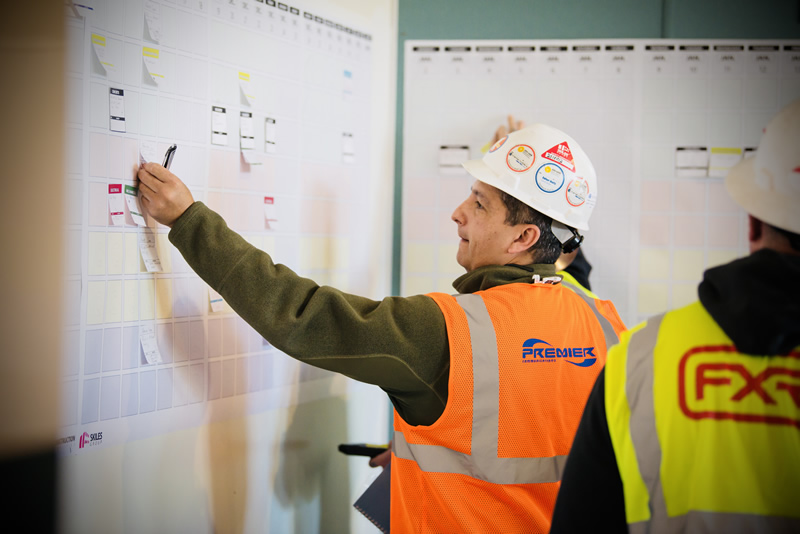Last Planner Pull Planning
If you have ever tried to implement Last Planner pull planning in the field, you will quickly learn that it isn’t as easy as it looks. Over the years, I’ve captured many plus/deltas in my notepad, and I always refer to these notes before any upcoming pull plan session I lead. While these pull plan sessions involved different people, activities, and milestones, they had one thing in common: none of them were perfect. If you’re looking for a cheat sheet to avoid some of these deltas I’ve experienced in my past, below are 5 easy tips to set your next pull session up for success.
1. YOU NEED A BETTER INVITATION AND AGENDA FOR YOUR PULL PLANNING SESSION
Keep in mind that the trade partner foreman (last planner) attending needs to know why, what, and how the session will be structured. Describe the milestone, in detail, that the team will pull from. Describe the area names or phases where work will be taking place. Set the expectation that the trade’s foreman will develop activities and plan the work that they know and understand.
2. ENSURE THE “LAST PLANNER” HAS A VOICE
It never fails that a trade partner owner, business developer, or preconstruction estimator will show up to the pull plan session. The last planners tend to allow these non-field participants to overshadow their opinions. Do not let these individuals commit to durations. The trade foreman (last planner) is the field leader who will be onsite daily with his/her workers who will perform the work. You cannot substitute the last planner from the planning conversation. If a trade partner owner shows up and you can’t give them the boot, just be sure the foreman is in the mix for all the planning, otherwise you may find out that the durations shared are incorrect.
3. YOU NEED A FACILITATOR, NOT A DICTATOR
Ask more questions. Remember that pull planning requires collaboration between people to discuss handoffs and commitments. If your facilitator tries to dictate activities, it may result in contractors always agreeing and ultimately lead to an unreliable plan. A good facilitator should always ask the right questions to flush out value-added activities based on the needs of other trades. Make sure to recognize and address their expectations for the promise or handoff. People have different perceptions and assumptions; a good facilitator will ensure that all parties have a common understanding.
4. DON’T SHOW THE CALENDAR DATES
Only ask for durations of work for the activity and leave it at that. This allows your team to focus on sequencing work in a way that is best for each other and the project. Explain to the team that, during the make-ready process of the Last Planner System™, the Last Planner pull planning activities will be evaluated for what can be done, leading to a more predictable start date.
5. LEAVE THE TEAM WANTING MORE
You asked experts in their field to come together and create a plan. Everyone is excited and looking forward to executing the plan they have created. Do not let the pull plan disappear! Display it in the big room, daily huddle areas, and anywhere else trades conduct LPS planning. Empower the trades to take ownership of their plan. Tell them what is next. Be transparent about what metrics the project is using to keep score. Show them what happens when people take ownership of constraints to remove them. Let them know that their accomplishments will be celebrated. Explain the benefits and expectations of the make-ready and weekly work planning processes. Make sure everyone understands the “why” of the Last Planner System™—and ask them to commit to it, and ensure that team members know they have support.
Most project teams are vulnerable to reverting to dictating how the work will be completed. The pull plans are often forgotten as the pains of day to day issues create chaos. My hopes are that the actions described above will help your team utilize the pull plan to execute the other processes of Last Planner System™. What actions have your project teams taken to ensure the pull plans are utilized throughout the construction process? Please share your thoughts in the comment field below.









